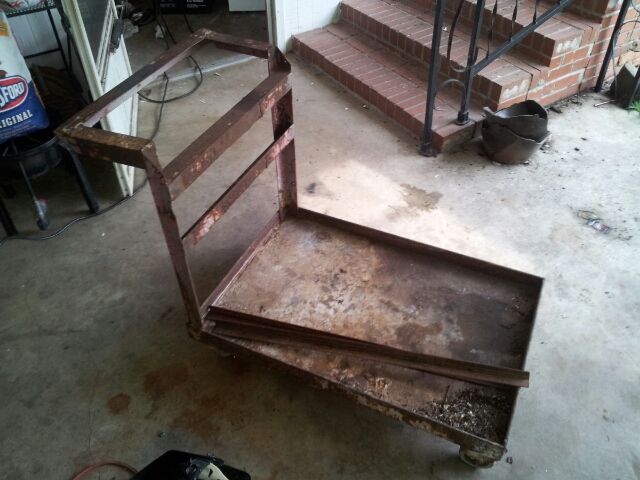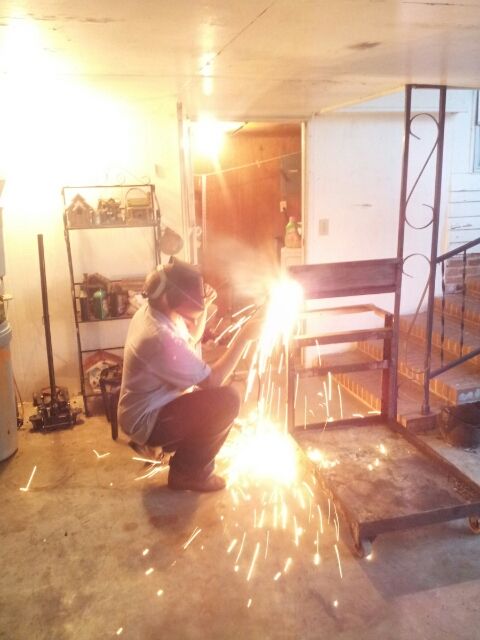loose rivet
Petty Officer 2nd Class
- Joined
- Jul 31, 2011
- Messages
- 151
Re: The Legend of Chug A Boom, or how a man and his tri-hull conquered the garage???
I did a similar boat a few years ago, the center V was worn through much like yours is. Mine had no drain plug from the factory, so that didn't become an issue.
What I did was to sand the whole boat as you did, I finish sanded it with 100 grit paper. I roughed up the area around the damaged spots and patched those by welding in the cracks with Alumaweld rods, since all my damage was along one strake, I then took a length of aluminum angle and ran it from the front to the transom the entire length of the strake. The result was both a boat with a bit more of a keel for directional control and a wear edge for when it got beached from time to time. I did also have a few front corner welds to redo but those were minor. I also went over the inside of the welded areas with JB weld just in case but mostly just for cosmetics. I then sprayed the whole inside of the boat with bed liner, and painted the exterior with self etching primer and finally some gray enamel.
I used the boat for a season or two but sold it when I found something a bit larger.
The Alumaweld rods take a bit to get used to using, so practice on some scrap first. I used Mapp gas on mine but they say propane will also work.
What I did was overkill but the result looked factory when done and the added angle down the middle served several purposes, it both added some strength, protected the repairs and possibly other thin spots, as well as adding some directional stability that it lacked under power. (I ran a 20hp motor on it).
The aluminum angle I used wasn't an off the shelf piece of aluminum, I had a local shop bend me a piece of .040" piece of 5086 sheet aluminum and I worked it to fit as I welded it in place.
I also replaced several loose or missing rivets and the interior did get a coat of Gluvit before painting.
I coated my transom wood with epoxy on all sides, reinforced between the two layers of plywood with a layer of fiberglass as well.
Again, total overkill but I wanted it to last forever. The transom was painted to match the hull over top of the epoxy coating to protect the epoxy from UV exposure.
I did a similar boat a few years ago, the center V was worn through much like yours is. Mine had no drain plug from the factory, so that didn't become an issue.
What I did was to sand the whole boat as you did, I finish sanded it with 100 grit paper. I roughed up the area around the damaged spots and patched those by welding in the cracks with Alumaweld rods, since all my damage was along one strake, I then took a length of aluminum angle and ran it from the front to the transom the entire length of the strake. The result was both a boat with a bit more of a keel for directional control and a wear edge for when it got beached from time to time. I did also have a few front corner welds to redo but those were minor. I also went over the inside of the welded areas with JB weld just in case but mostly just for cosmetics. I then sprayed the whole inside of the boat with bed liner, and painted the exterior with self etching primer and finally some gray enamel.
I used the boat for a season or two but sold it when I found something a bit larger.
The Alumaweld rods take a bit to get used to using, so practice on some scrap first. I used Mapp gas on mine but they say propane will also work.
What I did was overkill but the result looked factory when done and the added angle down the middle served several purposes, it both added some strength, protected the repairs and possibly other thin spots, as well as adding some directional stability that it lacked under power. (I ran a 20hp motor on it).
The aluminum angle I used wasn't an off the shelf piece of aluminum, I had a local shop bend me a piece of .040" piece of 5086 sheet aluminum and I worked it to fit as I welded it in place.
I also replaced several loose or missing rivets and the interior did get a coat of Gluvit before painting.
I coated my transom wood with epoxy on all sides, reinforced between the two layers of plywood with a layer of fiberglass as well.
Again, total overkill but I wanted it to last forever. The transom was painted to match the hull over top of the epoxy coating to protect the epoxy from UV exposure.






















